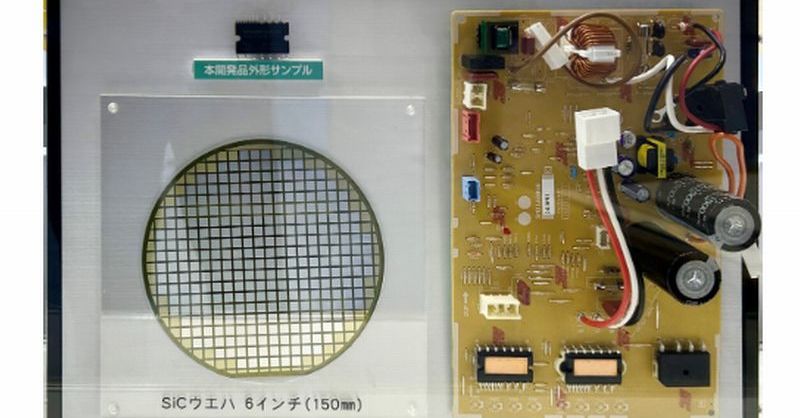Air Conditioner Efficiency Boost: SiC IPM Tech Revolutionizes Cooling
The quest for energy-efficient cooling solutions is heating up, and a new technology is poised to significantly impact the air conditioning industry: Silicon Carbide (SiC) Insulated Gate Bipolar Transistors (IGBTs), or SiC IPMs (Intelligent Power Modules). This innovative technology promises a dramatic increase in air conditioner efficiency, leading to lower energy bills, a smaller carbon footprint, and a more sustainable future. Let's delve into the specifics of how SiC IPM technology is revolutionizing cooling.
What are SiC IPMs and Why are They Game-Changers?
Traditional air conditioners rely on IGBTs made from silicon. While effective, silicon IGBTs have limitations in terms of switching speed and energy loss, leading to reduced efficiency. SiC IPMs, however, offer a significant upgrade. SiC's superior material properties allow for:
- Higher Switching Frequencies: SiC IGBTs switch on and off much faster than silicon-based counterparts. This allows for more precise control over the compressor, optimizing its operation and minimizing energy waste.
- Reduced Switching Losses: The faster switching speed directly translates to lower energy loss during the switching process, significantly improving overall efficiency.
- Higher Operating Temperatures: SiC can withstand much higher operating temperatures than silicon, leading to improved reliability and a longer lifespan for the air conditioning system.
- Smaller and Lighter Design: The improved efficiency allows for the use of smaller and lighter components, leading to more compact and cost-effective air conditioner units.
The Impact on Energy Consumption and Environmental Sustainability
The implications of SiC IPM technology for energy consumption are substantial. By significantly reducing energy losses, SiC IPM-based air conditioners consume less electricity to achieve the same cooling effect. This translates to:
- Lower Electricity Bills: Consumers can expect considerable savings on their monthly energy bills.
- Reduced Carbon Footprint: Lower energy consumption means less reliance on fossil fuels, contributing to a smaller carbon footprint and mitigating the effects of climate change.
- Increased Grid Stability: Widespread adoption of energy-efficient air conditioners can help stabilize the power grid, reducing strain during peak demand periods.
SiC IPM Technology: Current Applications and Future Outlook
While still emerging, SiC IPM technology is already finding its way into high-efficiency air conditioning systems. Leading manufacturers are actively integrating SiC IPMs into their product lines, focusing initially on larger commercial and industrial applications where the energy savings are most impactful.
However, the future looks bright for widespread adoption in residential air conditioners as well. As production scales and costs decrease, SiC IPM technology is expected to become increasingly prevalent across the entire air conditioning market.
Challenges and Considerations
Despite the significant advantages, several challenges remain:
- Cost: Currently, SiC IPMs are more expensive than silicon-based IGBTs. However, economies of scale are expected to bring down the cost over time.
- Supply Chain: The manufacturing process of SiC is complex, and securing a stable and reliable supply chain remains a crucial aspect for widespread adoption.
- Integration Complexity: Integrating SiC IPMs into existing designs may require modifications and adjustments to the overall air conditioning system architecture.
Conclusion: A Cooler, Greener Future
SiC IPM technology represents a significant leap forward in air conditioner efficiency. Its ability to drastically reduce energy consumption and minimize environmental impact positions it as a key player in the transition towards a more sustainable future. While challenges remain, the ongoing research, development, and increasing adoption of SiC IPMs promise a cooler, greener, and more energy-efficient future for everyone. Stay tuned for further advancements in this exciting field!
Keywords: SiC IPM, Silicon Carbide, IGBT, Air Conditioner Efficiency, Energy Efficiency, Cooling Technology, Sustainable Cooling, Green Technology, Energy Savings, Climate Change, HVAC, Power Electronics
Related Articles: (Internal links to relevant articles on your website, if applicable)
External Links: (Links to relevant research papers, industry reports, or manufacturer websites)
